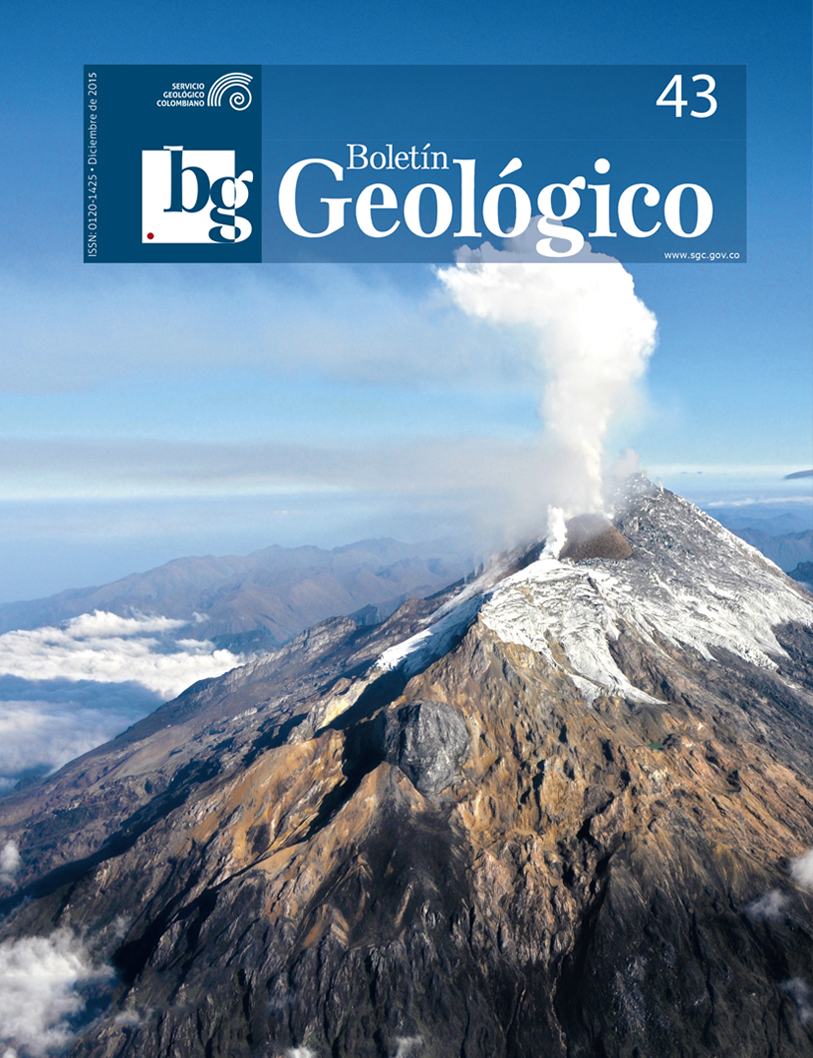Recent eruptions of Nevado del Huila Volcano: associated lahars and morphological changes of the glacier mass
DOI:
https://doi.org/10.32685/0120-1425/boletingeo.43.2015.21Keywords:
Volcano, ice caped, Huila, lahar, eruption, glacierDownloads
How to Cite
Issue
Section
Published
Abstract
Nevado del Huila Volcano (5364 masl), located in SW Colombia, on the Central Range, is made up by four ice capped peaks in its top. The only known historical activity of this volcano has been related with hot springs, fumaroles and low instrumental seismic activity until the eruptions of February 19 2007, April 18 2007 and November 20 2008 took place. Ash columns, gas emissions and primary lahars of different magnitude were associated to these eruptions, affecting the Páez river valley and towns settled into it. Inundation heights and volumes of the lahars increased in each of the successive eruptions. Velocities reached by the lahars considerably varied and arrival times to the Betania Reservoir were approximately between 10 and 8 hours. With these eruptions, notable changes were also produced on the volcano’s glacier mass (large scale cracks, blocks echeloning and tilting, ice-snow melting, etc.), showing a drastic receding in the glacier area during all this reactivation stage. After the November 20, 2008 eruption, a crater on the glacier area began to develop between the Central and South peaks and a dome is been emplaced into it. With both the volcano reactivation and the dome growing, expectation on the Páez, Símbola and Magdalena rivers valleys is maintained because of the possible occurrence of new lahars that can affect them.









